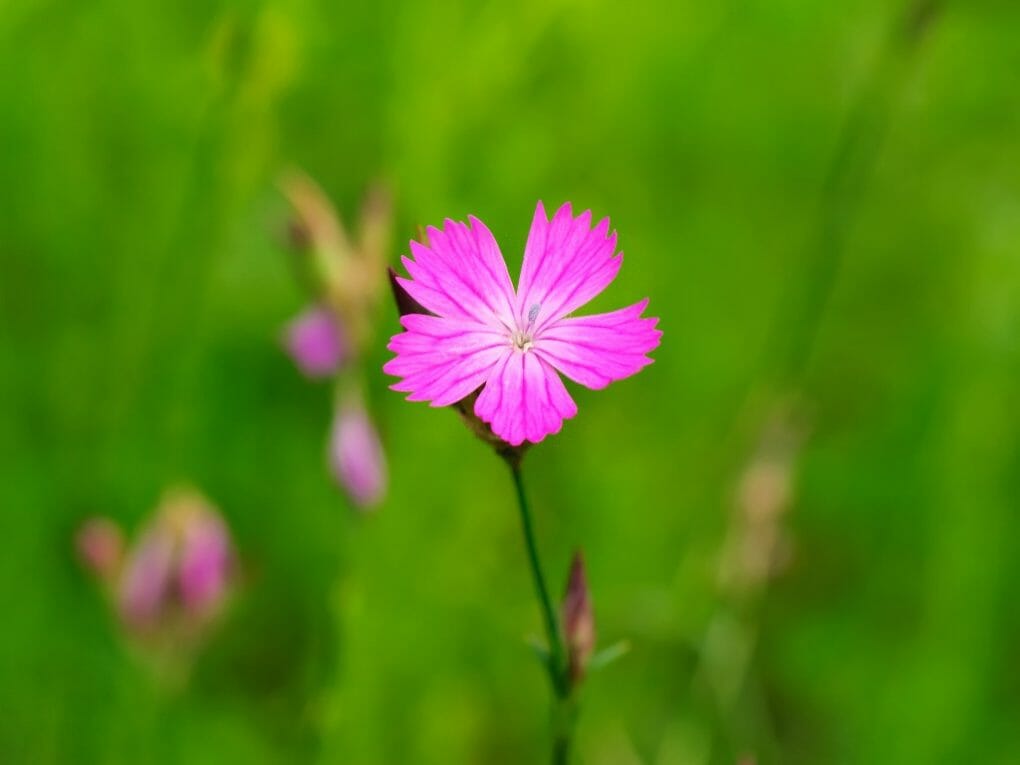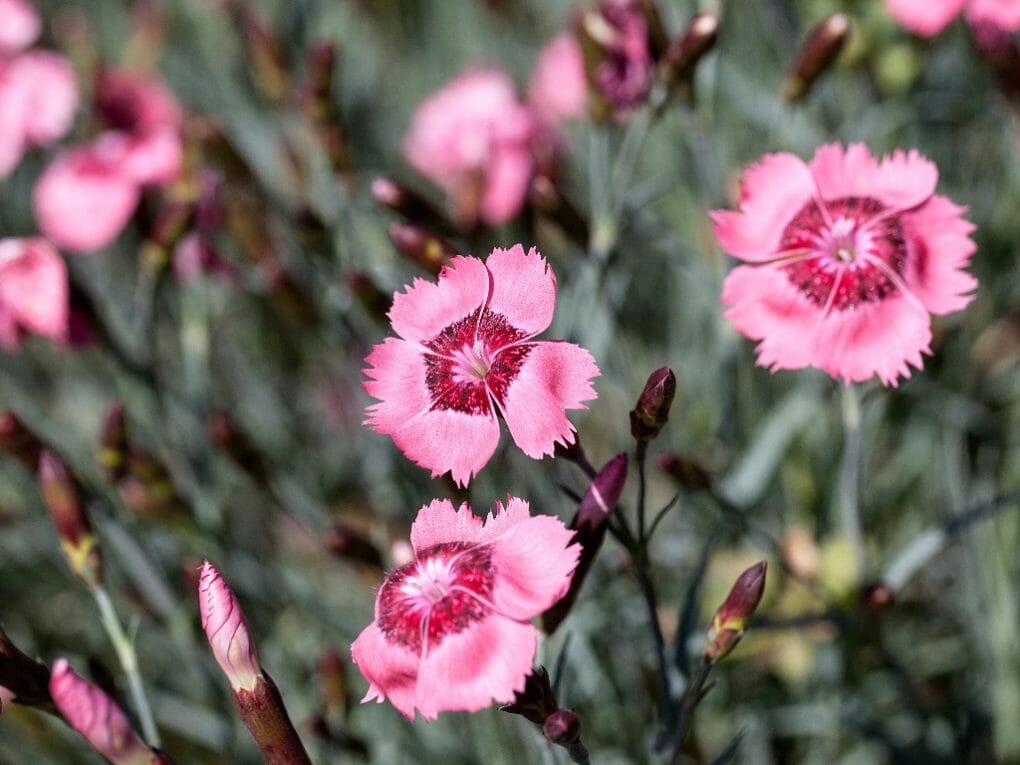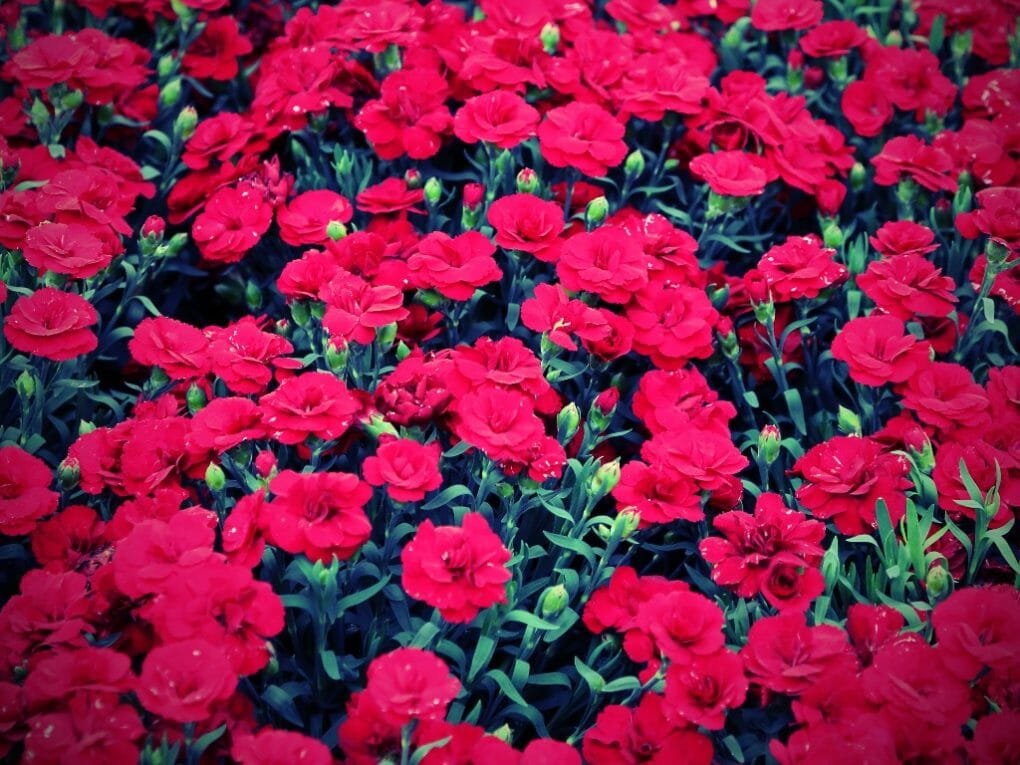Are Carnations Deer-Resistant? Know the Best Deer Resistant Dianthus Varieties

The majority of dianthus species are not susceptible to damage from deer. There is a good chance that deer will not be drawn to the robust scents of dianthus because they avoid poisonous plants or have a strong fragrance. Carnations, Sweet William, and the swiftly developing Chinese pinks are among the varieties of dianthus that are the most resistant to damage by deer. However, even the hardiest plants aren’t safe from the seeking muzzles of hungry deer. These voracious vegetarians have been known to consume as much as 6-8% of their total weight in foliage in a single day.
Some kinds of dianthus are more resistant to browsing by deer than others, despite the plant being highly desired by horticulturists because of its deer-resistant qualities.
Continue reading to learn which varieties are easily available and will perform the greatest job of warding off interlopers with long legs in your garden. Review the fundamentals of caring for dianthus plants.
Table of Contents
Best Deer-Resistant Dianthus Varieties
Suppose you consider planting dianthus in an area where deer frequently browse for food. In that case, you will be delighted to learn that most varieties of dianthus are resistant to browsing by deer. This will make your decision to plant dianthus much easier.
You won’t need to worry about them turning into a snack while you devote time to cultivating them.
More than 300 different species of flowering plants belong to the genus dianthus. All of these species are toxic to deer and have intense fragrances that are evocative of cloves and licorice, which makes them unappealing to them.
Consequently, each of the following categories will naturally have some degree of resistance to deer.
It is important to remember that just because a certain plant is labeled as “deer resistant” does not guarantee that deer won’t feed on it. When a deer’s desire needs to be satisfied, it is typical for them to seek out other types of vegetation first; however, once they are sufficiently hungry, it will consume virtually anything.
Carnation
Dianthus caryophyllus
Carnations, in their more traditional form, are often considered to be the most iconic type of dianthus. Since carnations are such a classic and recognizable type of flower, many people are surprised to learn that they belong to the dianthus family of flowers.
These stunning perennials can be found in many hues and tones, but white, pink, red, or deep, velvety purple are the most common ones. Even cultivars of carnations have a variegated pattern, which is a sight to behold and is really exciting.
Sweet William
Dianthus barbatus
Dianthus barbatus, often known as sweet William, is a member of the genus dianthus that is widely regarded as one of the most popular species within that genus. For hundreds of years, this decorative plant has been a mainstay in homes and gardens across the globe.
The Sweet William plant is easily identifiable by the small, softly overlapping blooms that are often a vivid red with serrated white edges or vice versa. These flowers can be found in the plant’s male or female flowering parts.
Additionally, it is well-known for its lovely aroma, which serves as a homing beacon for pollinators such as bees, butterflies, and other insects.
Chinese Pinks
Dianthus chinensis

Northern China, Korea, and southern Mongolia are Chinese pinks’ natural habitats, a rare dianthus species that do not thrive in high temperatures or high humidity levels.
Nevertheless, they may thrive in virtually any environment, provided the temperature is not very hot.
Even though they share many traits with other species, they may be distinguished from those other species by their fiery colors and the greatly exaggerated forms of their petals.
Because of their tolerance for a wide range of temperatures, Chinese pinks are ideal for gardeners who cultivate plants in moderate or cool environments.
Preventative Measures to Take to Ensure the Health of Your Dianthus Plants
That dianthus is nearly indestructible is excellent news for those just starting gardening.
To ensure that you can bask in the splendor of your plant for the longest period possible, you must have a solid understanding of how to provide it with the appropriate level of care.
Here are some general pointers for keeping your dianthus happy and extending its lifespan to get the most out of your plant.
Planting Dianthus
The circumstances of high heat and low humidity are ideal for the growth of dianthus. Consequently, most cultivars thrive best in locations that receive ample sunlight, have soil that is well-drained (but not very dry), and have a pH that is either neutral or slightly alkaline.
Because clay and silt soils retain moisture for longer than other types of soil, which can cause problems for a plant’s root system over time, these soils require amendments more than others.
If you want to plant dianthus in your yard, you should look for a location with at least six hours of direct sunlight daily.
If you are growing the flowers indoors, place them in a well-lit open area or a window facing south so they may get plenty of sun. You can also try growing them in a greenhouse.
Watering & Fertilizing Dianthus
Develop the routine of giving your dianthus a drink of water once every seven days on average. You are welcome to give it a good soaking, but before you do so, check to see that the soil or container you are using is prepared to allow water to drain away completely.
Because dianthus is prone to developing stem rot, it is risky business to allow the soil in which it is grown to stay too damp for an extended period.
Regarding its nutritional needs, dianthus can meet most of its requirements on its own and does not have a great deal of need for dietary supplements obtained from other sources.
Therefore, it should not be essential to feed them consistently. If you want to give your soil a little boost, you can incorporate a tiny quantity of organic compost every six to twelve months into it. This will help it retain moisture and nutrients.
Precautions to Take During the Winter

Dianthus is a hardy plant that can withstand moderate winters without any problems; however, extended exposure to icy weather may be too much for it to manage.
When it is predicted that the temperature will go below freezing, garden growers should be protected by wrapping them in a frost blanket, such as this floating row cover with an extra thick layer.
If you have container plants that you normally keep outside, you can simply bring them inside for the night and then return them to their usual location after the temperature has warmed up again.
Do Other Animals Eat Carnation?
The ability of dianthus to withstand damage from deer does not, alas, extend to rabbits.
Even though carnations and other dianthus are frequently toxic to small animals, rabbits will eat almost any kind of foliage they discover growing at ground level as long as it is close to the ground. This includes dianthus and other types of carnations.
Squirrels, much like rabbits (and deer, for that matter), do not have a particularly strong craving for dianthus, but they will gladly consume the plant’s flowers, leaves, and stems if necessary for their survival.
